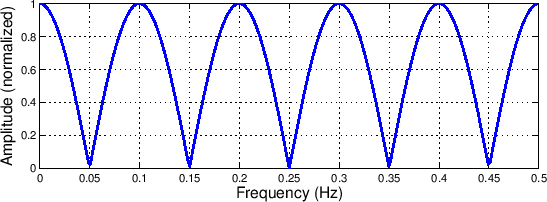Increasing the delay on the second term of the ``simple lowpass
filter'' can be seen as replacing that term with a delay line,
yielding
where  is the coefficient multiplying the delay.
is the coefficient multiplying the delay.
Figure 14:
A feedforward comb filter.
 |
Figure 15:
The comb filter magnitude response.
|
 |
The name of the filter comes from the fact that the magnitude response
resembles the teeth of a comb, and because there are not feedback terms.
``Mus 270a: Introduction to Digital Filters''
by Tamara Smyth,
Department of Music, University of California, San Diego.
Download PDF version (filters.pdf)
Download compressed PostScript version (filters.ps.gz)
Download PDF `4 up' version (filters_4up.pdf)
Download compressed PostScript `4 up' version (filters_4up.ps.gz)
Copyright © 2019-02-25 by Tamara Smyth.
Please email errata, comments, and suggestions to Tamara Smyth<trsmyth@ucsd.edu>